Short-acting—designed for acute pain and inflammation
Canine osteoarthritis (OA) effects up to ~25% of U.S. Dogs (~20 Million)1,2—
Severely limiting their quality of life with their families
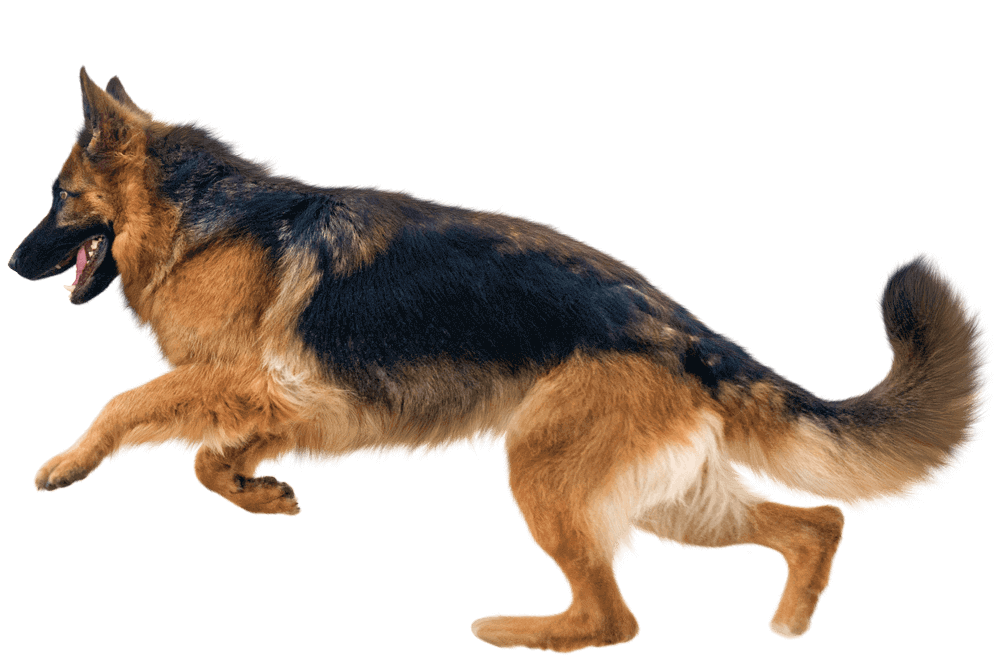

New developments in canine elbow osteoarthritis (A) are changing treatment options
Experts share their challenges in treating canine elbow osteoarthritis (OA)
Current therapies can fall short in effectively treating chronic OA.3
Limited effect—only target specific pathway receptors
Uncertain effectiveness of supplements and unapproved products in treating the chronic pain of OA—limited or no evidence-based data
Caution with administration—can be associated with systemic side effects (GI, renal, chondrotoxic)
Inconvenience or noncompliance—require daily administration or multiple treatments
Elbow OA is an extremely debilitating disorder, afflicting up to 2 million dogs in the US4
- Medical and surgical management is often unrewarding5
- Fewer than 50% of all treated dogs have satisfactory long-term recovery5
Elbow OA—A lifetime of debilitating pain
Analgesics are often needed as early as 2 years of age.5
Elbow dysplasia often leads to OA in young active dogs and is commonly diagnosed in the most popular breeds.5,6
Including Labrador Retrievers, Golden Retrievers, German Shepherds and Rottweilers

Pet parents want safe, effective, long-term pain and inflammation relief for their pet that frees them from the stress and worry of daily medicines.
A new treatment is needed for long-term relief from the pain and inflammation of chronic OA
Images are courtesy of Dr. David Dycus, DACVS, Veterinary Orthopedic Sports Medicine Group, Annapolis Junction, MD
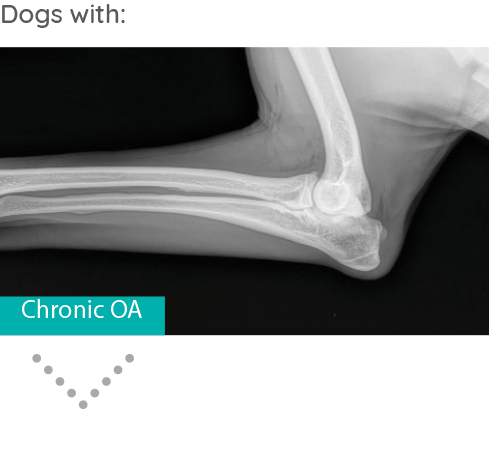
Where current therapies are not effective, have long-term safety concerns and surgery is not an option
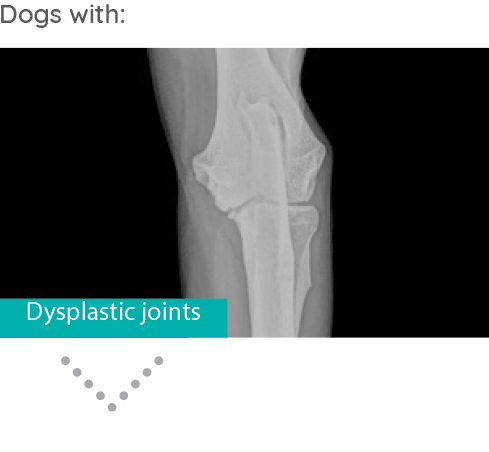
Break the Vicious Cycle of Inflammation—
Synovitis drives the onset and progression of canine OA1
The selective elimination of macrophages and synoviocytes could:6
- Reduce inflammatory mediators
- Break the cycle of pain and inflammation
- Alter the course of chronic OA treatment
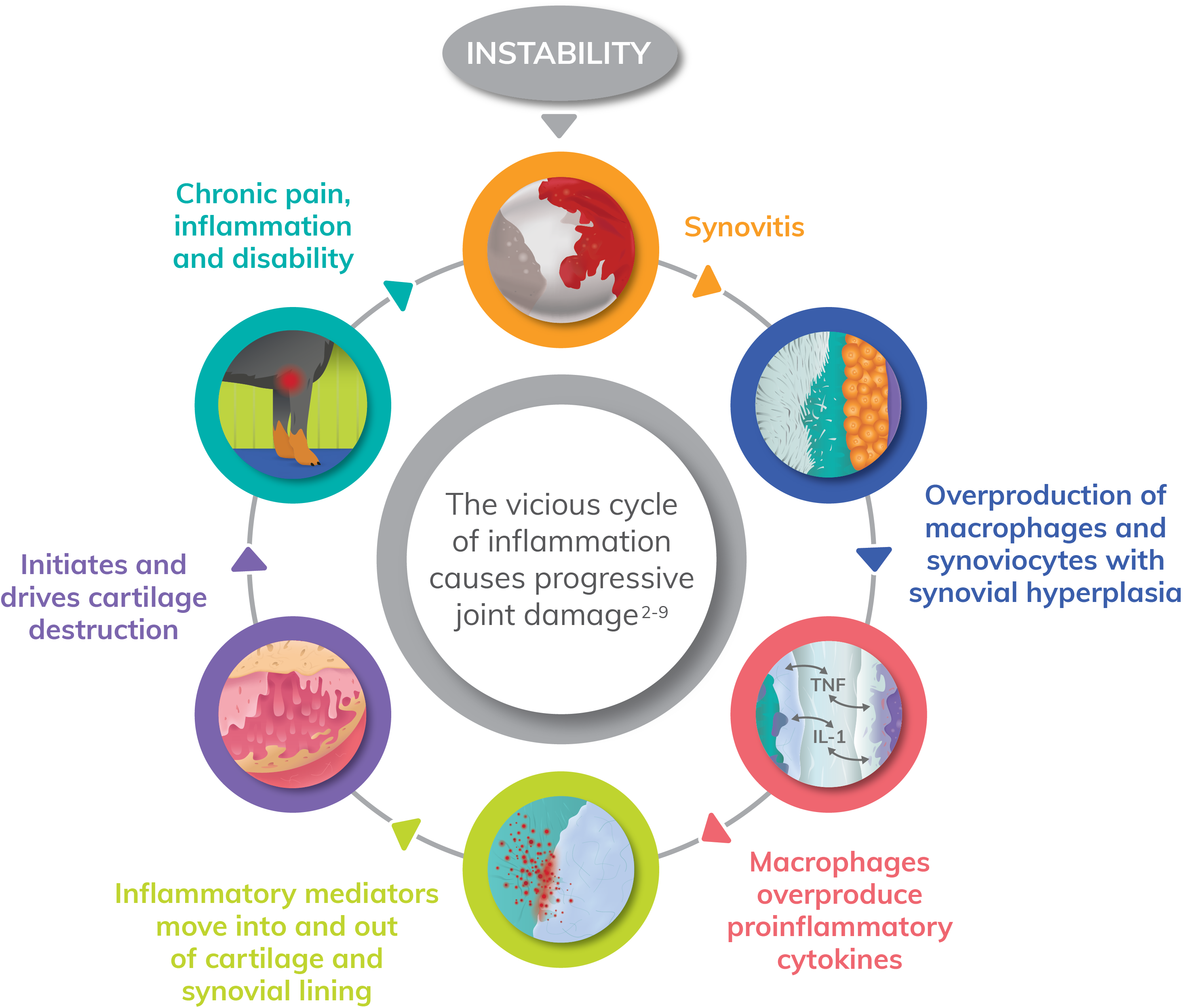
Experts agree that synovitis is a key contributor to the inflammatory process leading to canine osteoarthritis.
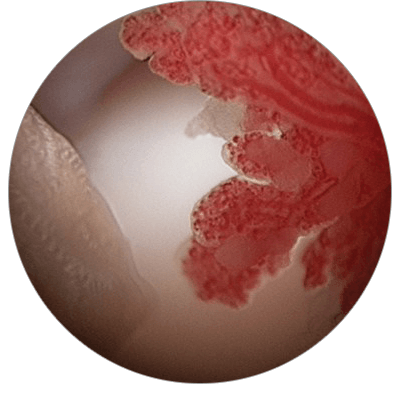
Synovial inflammation is strongly implicated in the pathogenesis of OA2,10,11
Arthroscopic view of canine diarthrodial joint showing early-onset synovial hyperplasia and angiogenesis12
- Reveals robust synovitis and synovial hyperplasia, the initial event in the histopathology of OA, occurring before the onset of radiographic changes
Synovetin OA® delivers sustained, long-term OA relief.7
Synovetin OA® provides targeted, non-systemic therapy.8
References:
- American College of Veterinary Surgeons. Osteoarthritis in dogs. Available at: https://www.acvs.org/small-animal/osteoarthritis-in-dogs. Accessed July 8, 2019.
- Daily Dog Stuff. US pet ownership statistics 2018/2019. Available at: https://www.dailydogstuff.com/us-pet-ownership-statistics. Accessed July 8, 2019.
- Bland SD. Canine osteoarthritis and treatments: a review. Veterinary Science Development. 2015;5(2):84-89. DOI: 10.4081/vsd.2015.5931.
- Data on File, Harmony Marketing Partners.
- Orthopedic Foundation for Animals. Examining elbow dysplasia. Available at: https://www.vin.com/apputil/content/defaultadv1.aspx?id=3853864&pid=11203&. Accessed 6/28/19.
- American College of Veterinary Surgeons. Canine Elbow Dysplasia. Available at: https://www.acvs.org/small-animal/canine-elbow-dysplasia. Accessed 5/15/19.
- Data on File, Exubrion Therapeutics®.
- Fox SM, Donecker JM. Synovitis Technical Bulletin. Exubrion Therapeutics® July 2019.